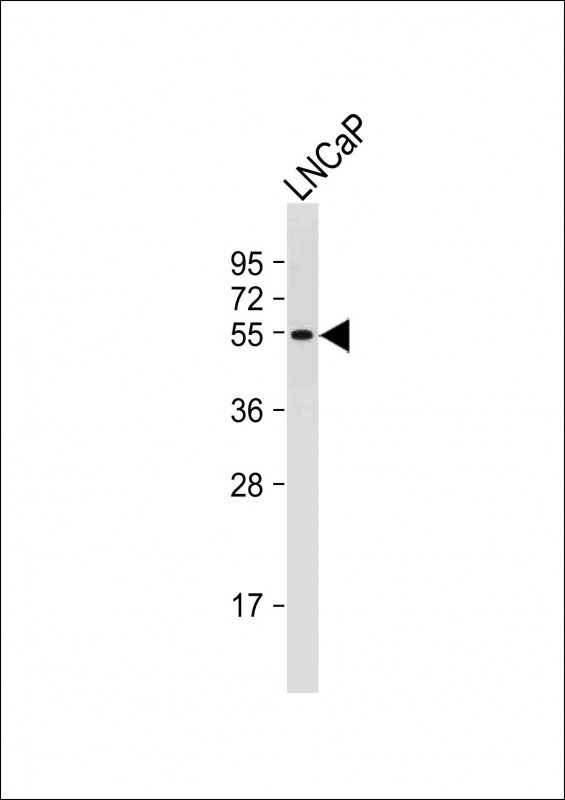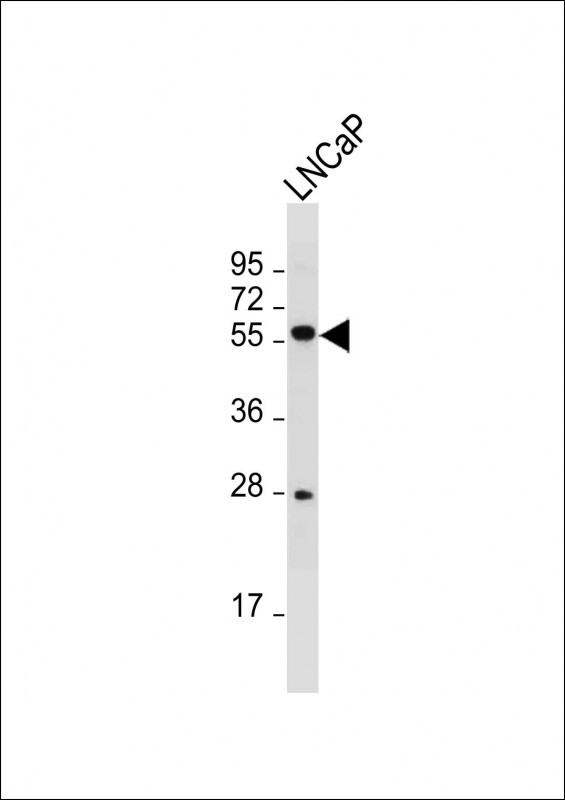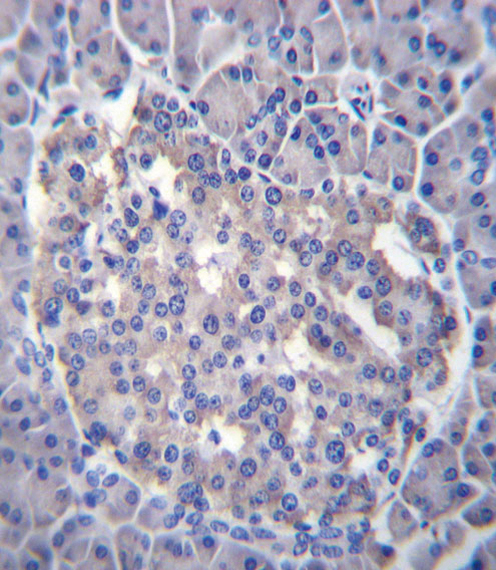Sestrin-3 Antibody (Center Y335)
Affinity Purified Rabbit Polyclonal Antibody (Pab)
- 产品详情
- 文献引用 : 5
- 实验流程
- 背景知识
Application
| WB, IHC-P, E |
|---|---|
| Primary Accession | P58005 |
| Other Accession | Q9CYP7, NP_653266.2 |
| Reactivity | Human, Mouse |
| Predicted | Mouse |
| Host | Rabbit |
| Clonality | Polyclonal |
| Isotype | Rabbit IgG |
| Calculated MW | 57291 Da |
| Antigen Region | 320-347 aa |
| Gene ID | 143686 |
|---|---|
| Other Names | Sestrin-3, SESN3, SEST3 |
| Target/Specificity | This Sestrin-3 antibody is generated from rabbits immunized with a KLH conjugated synthetic peptide between 320-347 amino acids from the Central region of human Sestrin-3. |
| Dilution | WB~~1:1000 IHC-P~~1:100~500 E~~Use at an assay dependent concentration. |
| Format | Purified polyclonal antibody supplied in PBS with 0.09% (W/V) sodium azide. This antibody is purified through a protein A column, followed by peptide affinity purification. |
| Storage | Maintain refrigerated at 2-8°C for up to 2 weeks. For long term storage store at -20°C in small aliquots to prevent freeze-thaw cycles. |
| Precautions | Sestrin-3 Antibody (Center Y335) is for research use only and not for use in diagnostic or therapeutic procedures. |
| Name | SESN3 (HGNC:23060) |
|---|---|
| Function | May function as an intracellular leucine sensor that negatively regulates the TORC1 signaling pathway (PubMed:25263562). May also regulate the insulin-receptor signaling pathway through activation of TORC2 (By similarity). This metabolic regulator may also play a role in protection against oxidative and genotoxic stresses (By similarity). May prevent the accumulation of reactive oxygen species (ROS) through the alkylhydroperoxide reductase activity born by the N-terminal domain of the protein (By similarity). |
| Cellular Location | Cytoplasm. |
| Tissue Location | Widely expressed.. |
For Research Use Only. Not For Use In Diagnostic Procedures.

Provided below are standard protocols that you may find useful for product applications.
BACKGROUND
Sestrins form a small family of redox enzymes which regulate accumulation of Reactive Oxygen Species. They protect cells and their DNA against oxidative damage and regulate cell growth and viability. These genes are often deregulated in cancers and their inactivation accelerates the growth of model tumors in mice.
REFERENCES
Rose, J.E., et al. Mol. Med. 16 (7-8), 247-253 (2010) :
Chen, C.C., et al. Dev. Cell 18(4):592-604(2010)
Peeters, H., et al. Hum. Genet. 112 (5-6), 573-580 (2003) :
终于等到您。ABCEPTA(百远生物)抗体产品。
点击下方“我要评价 ”按钮提交您的反馈信息,您的反馈和评价是我们最宝贵的财富之一,
我们将在1-3个工作日内处理您的反馈信息。
如有疑问,联系:0512-88856768 tech-china@abcepta.com.






















 癌症的基本特征包括细胞增殖、血管生成、迁移、凋亡逃避机制和细胞永生等。找到癌症发生过程中这些通路的关键标记物和对应的抗体用于检测至关重要。
癌症的基本特征包括细胞增殖、血管生成、迁移、凋亡逃避机制和细胞永生等。找到癌症发生过程中这些通路的关键标记物和对应的抗体用于检测至关重要。 为您推荐一个泛素化位点预测神器——泛素化分析工具,可以为您的蛋白的泛素化位点作出预测和评分。
为您推荐一个泛素化位点预测神器——泛素化分析工具,可以为您的蛋白的泛素化位点作出预测和评分。 细胞自噬受体图形绘图工具为你的蛋白的细胞受体结合位点作出预测和评分,识别结合到自噬通路中的蛋白是非常重要的,便于让我们理解自噬在正常生理、病理过程中的作用,如发育、细胞分化、神经退化性疾病、压力条件下、感染和癌症。
细胞自噬受体图形绘图工具为你的蛋白的细胞受体结合位点作出预测和评分,识别结合到自噬通路中的蛋白是非常重要的,便于让我们理解自噬在正常生理、病理过程中的作用,如发育、细胞分化、神经退化性疾病、压力条件下、感染和癌症。









